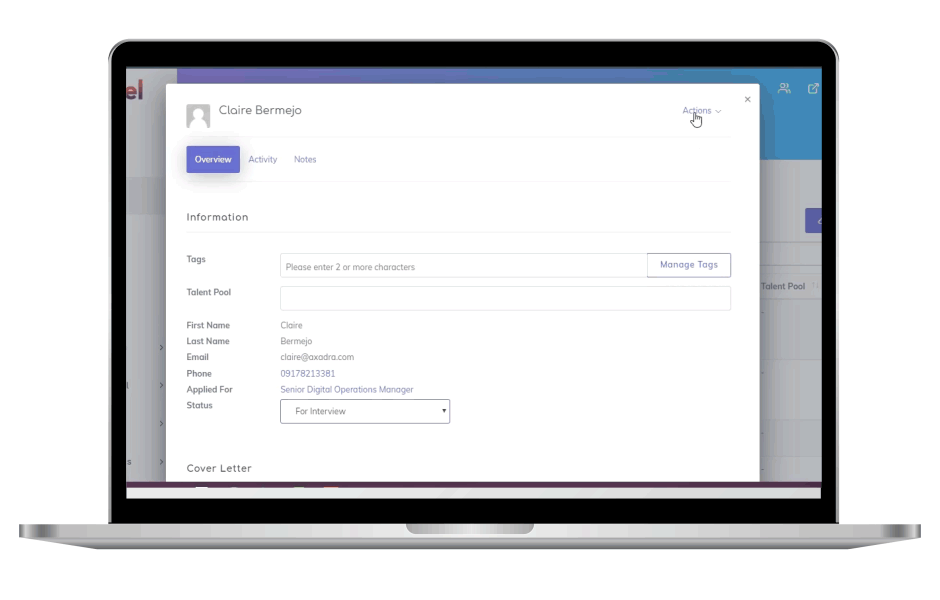The Challenges Encountered During Employee Onboarding
Onboarding challenges are something that companies across the globe struggle with. In a research conducted by Gallup, they found that only 12% of employees strongly agree that their organization has an excellent onboarding process for new employees. This is alarming news especially because onboarding plays a crucial role in employee retention.
You’ve invested so much time and resources in making the correct decision in hiring, but what if you forgot to address what makes them stay? Your recruitment team spends so much time filtering, interviewing, and hiring potential employees, so it only makes sense that you want to retain the employees you’ve chosen.
Employee onboarding lays the foundation for new hires to get a better feel for the company and their job. Bad onboarding processes have led to the resignation of new talent because their expectations weren’t met or because they simply didn’t feel connected to their company. This is why we’ve written about some of the most common new hire onboarding challenges so that you can avoid them.
Why is Employee Onboarding Important?
Before we discuss what some of the biggest challenges are to employee onboarding, we should first go through what makes this process so important.
Nationwide, the cost of hiring a new employee is averaged at $4,425. If your company is large enough, you may be looking to fill more than one position, this means that the cost of hiring can rack up quite an amount. That being said, you’ve already put in a significant investment into hiring, so you should also increase your efforts in retaining these new hires – or else, you might be forced to spend money, time, and personnel on hiring again. This is where employee onboarding comes in.
Employee onboarding is more than just the orientation that companies give on the first day. It’s the entire process of getting them settled down into their new position and company. Providing new hires with an excellent onboarding process is essential to their success.
A strong onboarding program has shown to yield higher retention rates, a more engaged workforce, and a return on your investment in talent. Given that it’s also your new hires’ first real foray with your company, it can help establish a stronger company culture and leave a great first impression on new hires.
Employee Onboarding Challenges
Now that you know the critical role that onboarding has on your team, it’s time to talk about the new hire onboarding difficulties that you may encounter.
No Personalization
While most companies use a new employee onboarding checklist to help them get started, we’ve found that the problem can sometimes be the checklist itself.
Remember that you’ve hired an individual to be a part of your team because you like their personality and because you have expectations of what they can bring to your company as an individual. This is why the lack of personalization is a huge challenge in the onboarding process.
Personalization doesn’t necessarily mean creating a new onboarding process just for them, it can be something as simple as sending out emails with their names on the greeting. These are simple to do but they can pack a punch in making new hires feel more welcome.
Unaligned Onboarding
Most companies think that an onboarding process is a one-size-fits-all solution. This is simply not true.
We find that it’s best to have two different onboarding processes ready for new hires: a company onboarding process and a role-specific onboarding process.
Making a role-specific onboarding process can help new hires understand the demands and expectations of their new role. It’ll also help them dispel any hesitations they may have about the job, which can help lower attrition rates over time and give them a better sense of confidence when performing their job.
High Volume of Paperwork
As an employer, you know that taking on new hires will require a lot of back and forth for the necessary paperwork to be completed and filed. Without a proper checklist of documents to prepare during onboarding, this process can take even longer.
Additionally, if you don’t have a checklist, you may even forget that you haven’t collected certain documents from your employees, which can lead to compliance issues in the long run.
Unclear Onboarding Timeline
Let’s face it, the onboarding process can take a while especially if you also have a job-specific onboarding. Onboarding timelines can vary per position, and if you don’t give your employee a clear timeline of what to expect in this process, and when they can expect it, this may lead to unhappiness and impatience.
We recommend that you provide employees with a copy of their employee onboarding checklist, complete with a timeline of when they should expect the next step on their onboarding journey.
Lack of Employee Engagement
Another huge part of the onboarding process for new hires are your current employees. Your new employees play an important role in making new hires feel welcome and in talking about their working experience in your company. If your employees have no good things to say about your company, your new talents may take it as a sign that something’s not right and they may not be too inclined to stay.
Delays in IT Setup
New hires that experience delays in their IT set up may not be able to perform their jobs right away. This means that if you’re going through job-specific onboarding and they don’t have their company-issued equipment and login details, they may lag behind their peers. So, it’s important that you coordinate with your IT team about your new hire’s setup, that way they’re ready to learn and absorb everything you teach them during onboarding.
Information Overload
During the onboarding process, it makes sense if you want to get in as much information as possible in as little as possible time. Efficiency is important, but so is giving your employees time to digest all the new information that they learn.
Sometimes, in an effort to speed up the employee onboarding process, we forget that our new hires are going through some big changes, and they may not have the mental bandwidth to absorb everything you say. You should also remember that just because the things you say are practically second nature to you, doesn’t mean that they’ll pick up on it as easily.
Our tip is to spread out the information you want your employees to learn over a period of time. This will allow your employees to sit down with the information and retain it. Additionally, if they have any questions, they can also ask it without feeling like they’re holding up the onboarding process.
No Employee Checkups
Not scheduling employee checkups with your new hires can lead to more harm than good. While it’s true that it can be a challenge to touch base with that many new hires, it’s still an important part of the onboarding process.
If there’s too many people and not enough personnel to accomplish this, try to ask for help from their direct supervisors to perform this task. We also recommend that you implement a candidate tracking system, so that you’re sure that each new hire has gone through a touch base and so you also know where they’re at in their onboarding process.
Static Onboarding Process
One of the biggest challenges in the onboarding process is stagnation. While it’s true that having an onboarding process is critical, never changing it according to feedback can be just as problematic. This is because it may just show that you’re not taking criticism seriously, and it’s really a huge loss for your company because you’re not applying the knowledge you gain.
Changing up your onboarding process according to feedback can help your company increase employee retention. If you’re not sure where to start, here are some data points you can look at to improve your onboarding process:
- Feedback from new hires on onboarding experience
- Feedback from managers on new hires’ performance
- New hire engagement
- New hire performance
- Employee retention rates
- Reasons for turnover
Keep Talented Employees in Your Company with Skillfuel
Hiring the right people is just the first part of building a team. The next part, which is much harder, is keeping them happy in your company and the onboarding process is an important step in doing just that.
Throughout this article we’ve told you all about the different challenges that you may face in the onboarding process, rest assured that if you apply everything you’ve learned, you’ll experience better employee retention rates.
If you want to make your job much easier, make sure to integrate some helpful tools in your process. If you’re looking for a company that can provide you with the right tools, you can visit Skillfuel and browse through our various software to see which one can help you.















